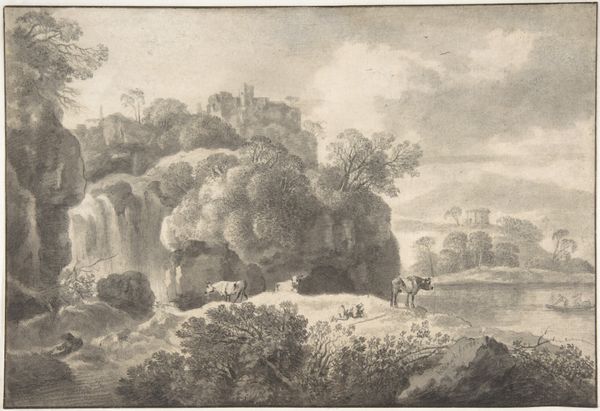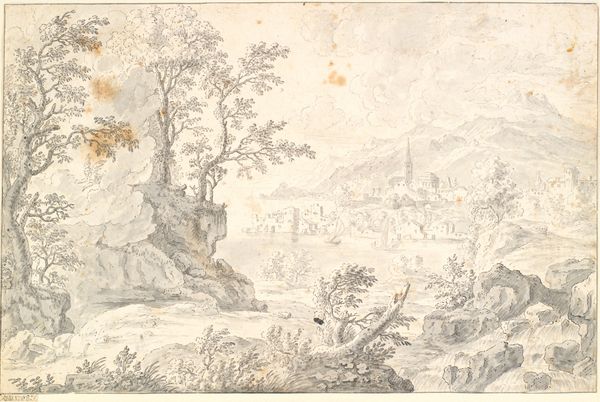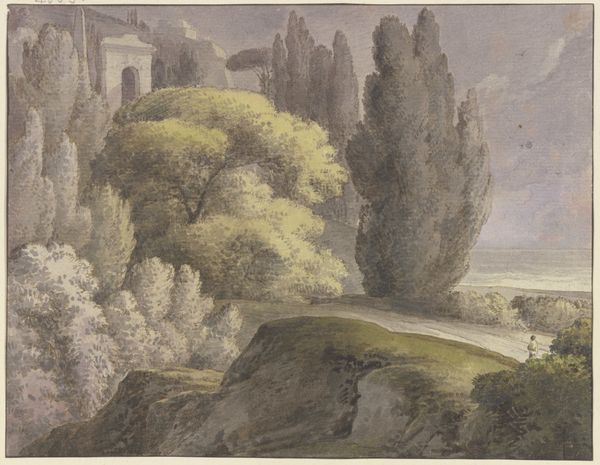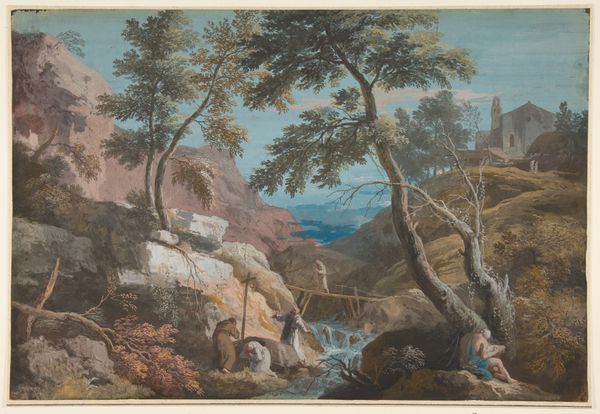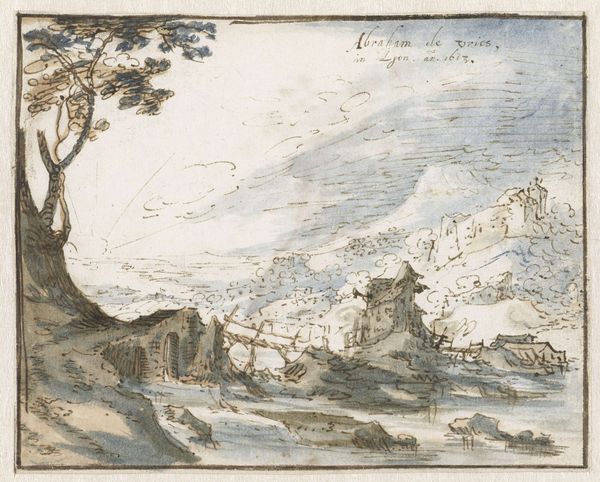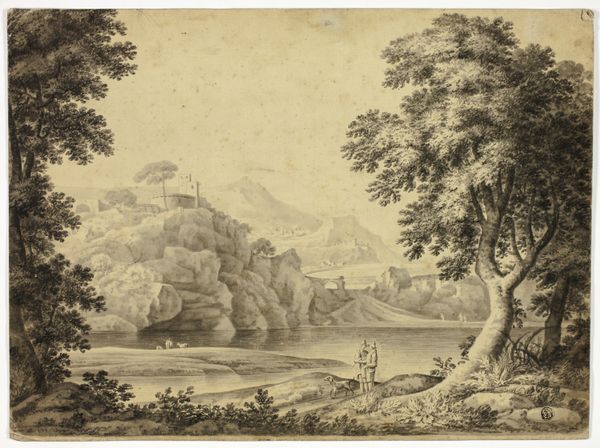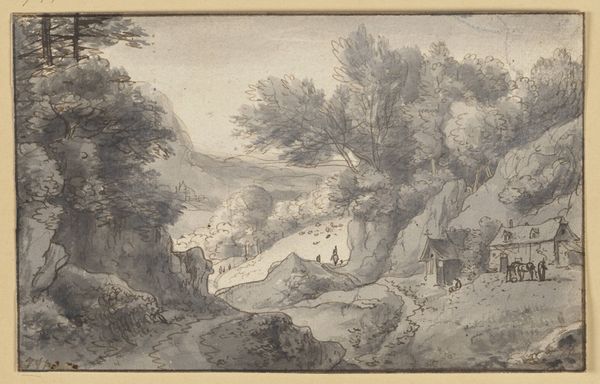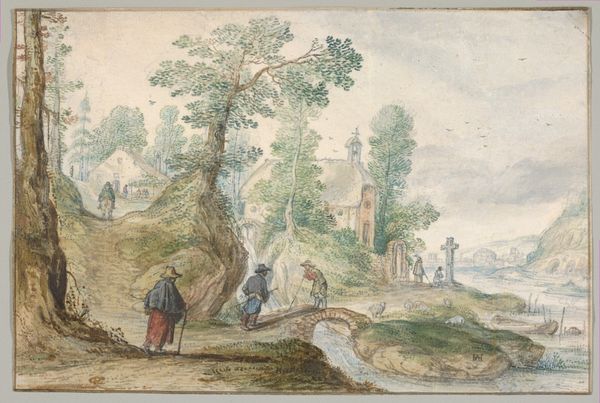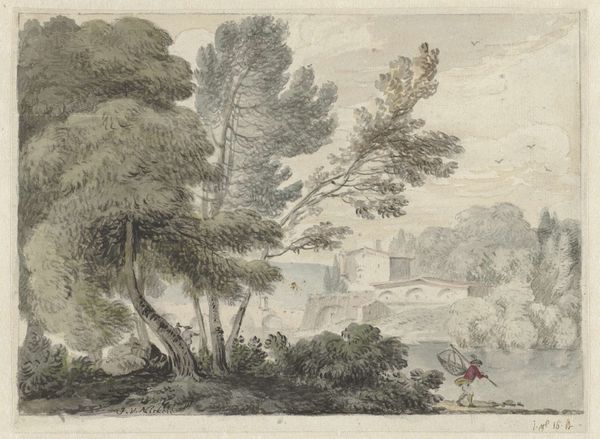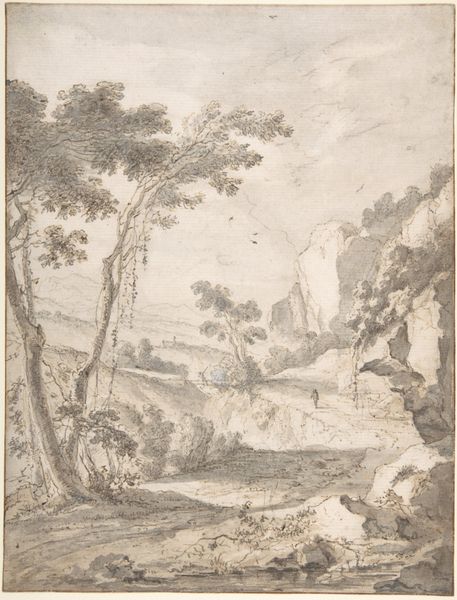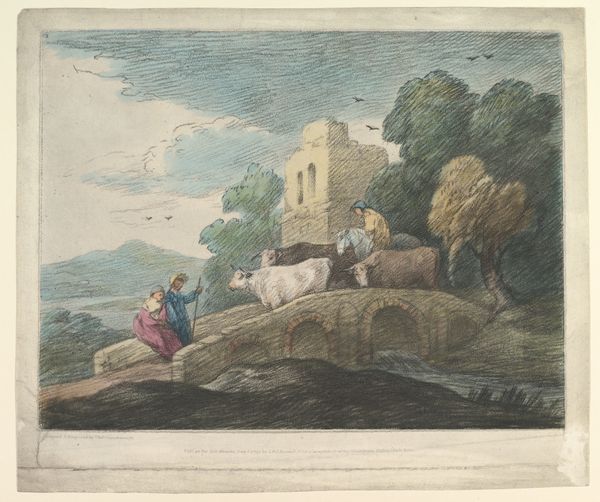
Abendstimmung am Muro Torto vor der Porta del Popolo in Rom 1787
0:00
0:00
Copyright: Public Domain
Editor: So, here we have Johann Wolfgang von Goethe's "Abendstimmung am Muro Torto vor der Porta del Popolo in Rom," created in 1787. It appears to be a watercolor and ink drawing. I’m immediately struck by the contrast between the rugged cliff face on the left and the more formal architecture in the distance. What’s your take on it? Curator: It's a fascinating piece when considered within Goethe's biography and the broader context of the Grand Tour. How do you think his travels influenced his artistic style, and how did Rome, as a powerful cultural symbol, play into that? Editor: I imagine experiencing Rome firsthand, with all its history and grandeur, must have been incredibly inspiring! Perhaps the combination of wild nature and classical architecture reflects his attempt to reconcile Romanticism with Neoclassicism? Curator: Precisely! Consider the Porta del Popolo in the distance – a gateway to Rome, loaded with historical and political significance. How do you think its placement within this landscape affects the viewer's experience? Is it an invitation or a statement? Editor: I think it suggests that even this grand gateway and all that it represents is just a small part of something much larger, the landscape and its deep history perhaps? A bit of Romantic humbling of human endeavor. Curator: A great insight! And it shows how Goethe uses art not just to depict a scene but to comment on the relationship between humanity, nature, and the weight of history. Thinking about art as a kind of political commentary in this way feels fresh. Editor: It does change how you see it! I was initially drawn to the composition but didn't fully grasp the layered historical context and its possible meanings. Curator: Exactly, seeing art in its time and place reveals the complex layers within. I learned a bit seeing your initial reaction to composition informing this view.
Comments
No comments
Be the first to comment and join the conversation on the ultimate creative platform.


